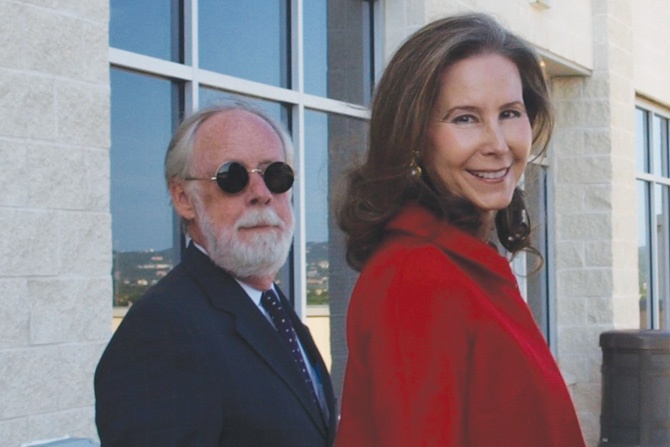The Beginning
The Texas statute known as the Texas Motor Vehicle Commission Code, aka TMVC Code, aka Chapter 2301, Occupations Code, turned 50 years old on April 7, 2021.1
A look-back from where the 62nd Legislature started to where the statute is today is integral to understanding the motor vehicle industry and its governance. The following discussion includes highlights of the agency’s and statute’s fiftieth anniversary.
In 1971, W.T. “Bill” Moore from Bryan, dubbed by the media as the “Bull of the Brazos,” authored S.B. 140, and L. Dean Cobb from Dumas sponsored the bill known as the Texas Motor Vehicle Commission Code in the House. It first passed the Senate on Feb. 25 with 29 Yeas and 0 Nays. The House next passed the bill, with amendments, on March 25th, with 134 Yeas and 5 Nays. Five days later, on March 30th, the Senate concurred with the House amendments, with 31 Yeas and 0 Nays.
The 62nd Legislature determined “that authority is urgently required to regulate and license” both new motor vehicle manufacturers and distributors and their representatives as well as franchised new motor vehicle dealers, and so the rule requiring bills to be read on three several days in each House was suspended. The new Act took effect on its passage – April 7, 1971.
Policy and Purpose
The 62nd Legislature’s rationale for the Texas Motor Vehicle Commission Code remains much the same today as when it was first enacted, i.e., the distribution and sale of new motor vehicles vitally affects the state’s general economy, as well as the public’s interest and welfare. Thus the state’s regulation and licensing of the industry is necessary.
A state’s interest in the relationship between the two signatories to a franchise agreement and their respective responsibilities is demonstrated by the passage of statutes governing their actions in all 50 states. Texas determined that a manufacturer produces the motor vehicle, and the franchised dealer buys, sells, services, and repairs the motor vehicle. These separate and distinct roles are upheld in the statutory framework with enforcement granted by the legislature to the agency and its board to serve the public, the consumer, the agency’s licensees, and this State.
In 1995, independent motor vehicle dealers were added to the code. The policy and purpose provision was amended so that the distribution and sale of new and used motor vehicles are now enforceable by the agency.2
Commission & Board Members
Throughout its tenure, the agency has been: a stand-alone agency, an independent entity within the Texas Department of Transportation, a division within the department, and again, a stand-alone agency. And, the board has gone from six to nine members with member alterations along the way.
As originally constructed, the Texas Motor Vehicle Commission was a six-member commission appointed by the Governor with the advice and consent of the Senate. Two members were public, and four of the six members were franchised dealers with a minimum of 10 years’ experience. No two dealers franchised by the same manufacturer or distributor were eligible for appointment.3
The commission grew to nine members in 1979, with five dealer members and four public members. In 1987, the commission returned to six members; however, the members4 were now all public members.5
The agency became a part of the Texas Department of Transportation in 1997, and the board, although within the Texas Department of Transportation, was an independent entity within the department to conduct policy and regulatory functions and duties, including carrying out the functions and duties of the Act. In that same session, the legislature increased the board to nine members: two dealers, at least one franchised dealer, and one licensed manufacturer or distributor representative.6
A repeal of the board occurred in the 79th Legislature, and the Texas Department of Motor Vehicles became a division within the Texas Department of Transportation in 2005.7
The current agency, the Texas Department of Motor Vehicles, with its nine-member board, was organized by the 81st Legislature, R.S. A transfer of all powers, duties, and obligations occurred from the Texas Department of Transportation, effective Sept. 1, 2009, with turnover to the board of the Texas Department of Motor Vehicles on Nov. 1, 2009.8 The legislature also conferred motor vehicle titles and registration and motor carrier responsibilities during the transfer to the newly formed Texas Department of Motor Vehicles.
The board is now comprised of nine members: three must hold a dealer’s license, of whom two must be franchised dealers of different classes, and one must be an independent dealer; one member must be a representative of a manufacturer or distributor; one member must be a tax assessor-collector; one member is a representative of a municipality or county law enforcement agency; one member must represent the motor carrier industry; and, the remaining members are public.9
Although the agency’s responsibilities are many, its charge encompasses the motor vehicle industry and ensures a sound system of distributing and selling motor vehicles for the public, the consumer, the licensees, and the State.
Warranty Issues & the “Lemon Law”
The legislature’s concern for a buyer’s motor vehicle warranty and repairs and warranty compliance was as important in 1971 as it is today.
The 62nd Legislature gave a new motor vehicle retail buyer the statutory authority to formally complain about a defect covered by their motor vehicle’s warranty. The buyer was required to send a certified letter to the dealer specifying the defect covered by the warranty, and the dealer had 30 days to correct the defect. If the defect was not corrected, the owner could file another complaint by sending a second certified letter to the dealer with copies to the applicable manufacturer or distributor and the commission. The commission could then hold a hearing on the unsatisfied complaint to determine if a violation occurred.10 Although amended, this provision remains intact for a warranty complaint (See §2301.204, Texas Occupations Code).
The legislature determined to provide an additional remedy for a new motor vehicle purchaser by passing the “Lemon Law” in 1983. This new legislation provided that a new motor vehicle must conform to the vehicle’s express warranty. If repairs cannot conform the vehicle to the warranty, then a replacement vehicle or a refund could be ordered by the board to the consumer from the warrantor.11
Since 1983, the agency reports that there have been over 19,000 “Lemon Law” complaints filed and the repurchase or replacement value to consumers is over $121 million. In FY 2020, 14 vehicles were ordered repurchased or replaced pursuant to a hearing, with a total value of $683,999.12
Licensing
A foremost function of the agency is licensing. A license requirement is integral to the agency’s enforcement. A person may not engage in business or serve in the capacity of a dealer, a manufacturer, or a distributor without the requisite license issued by the department. The adopted legislation made plain that a dealer cannot operate as a dealer without a currently valid license from the ne´ Commission, and it is unlawful for a manufacturer, distributor, or representative to operate without a current and valid license from the ne´ Commission. The first license was required to be obtained no later than Dec. 1, 1971.13
To give some perspective as to events occurring in 1971 when the legislature passed S.B. 140, a new Ford Mustang was just over $22,000; Mariner 9 became the first spacecraft to orbit another planet and its total program cost was approximately $554 million; Walt Disney World opened in Orlando, Florida;14 and this agency’s annual license fees were as follows:
- For each manufacturer and distributor, $200.
- For each dealer who sold more than 200 new motor vehicles in the preceding calendar year, $50.
- For each dealer who sold 200 or less new motor vehicles in the preceding calendar year, $25.
- For each representative, $25.15
Eight years later, in 1979, a new Nissan 280ZX was $39,430 and a Pontiac Grand Lemans Sedan was $27,590. The average MSRP moved into the five-figure range; Margaret Thatcher was elected U.K.’s Prime Minister; a Sony Walkman was $200;16 and the annual license fee increased to $300 for each manufacturer or distributor. The dealer’s fee doubled in each category to $100 and $50, respectively, and the representative fee remained at $25.17
Nineteen-eighty-three (1983) brought the highest unemployment since 1941; a new Chevrolet Chevette was $18,834, and a Mitsubishi Starion Turbo was $28,828. Microsoft Word was introduced,18 and the license fee increased again. A manufacturer or distributor paid an annual fee of $500. A dealer who sold up to 200 new vehicles paid $100; a dealer who sold 200 to 500 new vehicles paid $150; 500 to 1,000 new vehicle sales brought the fee to $200; and a dealer selling more than 1,000 new vehicles now paid $250. The representative fee increased to $50.19
Annual license fees were raised again in 1987. Each manufacturer and distributor was assessed $750 for their annual license. A franchised dealer paid an annual license fee based on the number of new vehicle sales, ranging from $150 to $450. Each representative paid $75, and converters now paid $250.20 This was the year that a new Dodge Dakota went for $17,958; the U.S. stock market crashed on Oct. 19, falling 22.6%; and a popular movie was “Fatal Attraction.”21
The 72nd Legislature, R.S., raised license fees again in 1991 – the same year the internet went public, and a new Ford Explorer XL 4×4 was over $30,000.22 License fees increased for a manufacturer and distributor to $825, and for dealers, the fee increase ranged from $165 to $495. A representative license went to $85; a converter’s license fee increased to $275; and now, if a dealer amended their license, a fee of $25 was assessed.23
Lessors and lease facilitators came under the agency’s jurisdiction in 1995. A lessor’s license ranged from $175 to $750, depending upon the number of vehicles leased, and a lease facilitator paid $375.24
Not since 1995 has the legislature increased license fees; however, as a franchised dealer’s new motor vehicle sales increase, so does their license fee. That year, the legislature increased the license fee for a manufacturer and distributor to $900 plus $20 for each franchised dealer. Franchised dealers saw an increase in their license for annual new vehicle sales: for 200 or less, $175; 200 – 400, $275; 400 – 800, $400; 800 – 1,200, $500; 1,200 – 1,600, $625; and, more than 1,600, $750. For each representative, $100, and each converter, $375.25 Nineteen-ninety-five (1995) was when a jury found O.J. Simpson not guilty and awarded the movie “Forrest Gump” six Oscars. A new VW Jetta GL sold for $24,714, and a new Oldsmobile Cutlass Ciera sedan listed for $27,900.26
In 1997, the legislature added a new $100 license fee category. This new category was for a dealership’s service-only location, separate from the dealership, in which a franchised dealer offers no new motor vehicle for sale but performs warranty service on vehicles that the dealer is franchised and licensed to sell.27 That was the same year “Titanic” grossed $2.1 billion, setting a box office record, and a new Plymouth Voyager cost $28,272.28
Although the categories of licensees today have increased since 1971, the agency’s license remains instrumental to doing business in Texas, as no person may engage in business as a dealer, manufacturer, distributor, converter, vehicle lessor, or vehicle lease facilitator without holding the requisite license from the agency.29
New Point and Relocation Protests
With respect to a franchised dealership’s new point, in 1971, the commission could deny a dealer application to establish a new dealership where the same line-make of new motor vehicle was represented. In order for the commission to deny the new point, the licensed dealership must be adequately representing the manufacturer or distributor in the community and “no good cause” shown to be in the public interest for establishing an additional dealership.30
Six years later, the legislature gave the commission direction as to when it could deny a proposed dealership a license “in the community” by adding a 25-mile radius requirement for a licensed dealer to have standing to protest a new point. The commission could now deny the new point if the established dealership is:
- Within 25 miles of the proposed new point;
- Adequately representing the manufacturer or distributor;
- In compliance with their agreement; and
- No good cause exists for an additional dealership in the public interest.31
The legislature in 1987 amended the mileage distance to protest a new point from 25 miles to 15 miles of the proposed dealership site.32 In 1995, the legislature determined that if a dealership’s relocation is farther from a same-line make dealer, then the proposed relocation was not subject to protest.33
Today, a protest of a new point or a relocation is often settled through mediation; however, the rights of the parties are statutorily provided for through hearing and appeal.
Sale of New Motor Vehicles
As constructed in 1971 and as necessary throughout these past 50-plus years, a required license issued by the agency is a prerequisite to engaging in business or serving as a dealer selling and servicing new motor vehicles through a franchise; manufacturing new motor vehicles; or distributing new motor vehicles.
To address the converter and second stage equipment manufacturer issue, the legislature included a new section in 1981 providing that a person must have a valid commission-issued license to buy, sell, or exchange a new motor vehicle for the line-make that is represented and advertised to the public unless a second stage or allied equipment manufacturer modifies or converts a new vehicle with the original motor vehicle warranty intact.
The new language specifically provided: “No person may represent to the public, by advertising or other means, that he is engaged in the business of buying, selling, or exchanging new motor vehicles unless he holds a valid license issued by the Commission for the make or makes of new motor vehicles being bought, sold, or exchanged; or unless acting as a bona fide employee or agent of the licensee; or unless such person is a second stage or allied equipment manufacturer modifying or converting new motor vehicles and offering them for sale with the original manufacturer’s warranty unimpaired.”34
The legislature defined “engaging in the business of buying, selling, or exchanging new motor vehicles” to mean:
- Displaying for sale a new motor vehicle on a lot or showroom;
- Advertising a new motor vehicle for sale; or
- Regularly or actively soliciting a buyer for a new motor vehicle.35
This time period – the 1980s – saw vans as an increasingly popular vehicle, and as more vans were converted and more vehicles modified, the buyer needed certainty regarding the responsible party for the vehicle’s warranty, and the state needed clarification for titling. In response, the legislature determined that the “make” of a vehicle is the chassis manufacturer and repealed language allowing a second stage or allied equipment manufacturer or converter to sell a modified or converted new motor vehicle with the original equipment manufacturer’s warranty unimpaired.36
A specific manufacturer, distributor, and representative prohibition to operate as a “dealer” was added to the code in 1995. The only exception to the prohibition was if a franchised dealer previously owned the dealership, and the dealership is currently for sale at a reasonable price or the manufacturer, distributor, or representative operates it in a bona fide relationship with a franchised dealer who is required to make a significant investment, subject to loss, and who reasonably expects to acquire full ownership.37 This accommodation to a franchisor and the franchisee and that dealership’s community allowed a dealership to continue in business if no buyer was readily available for a dealership closing its doors.
Nineteen ninety-nine brought about a legislative response to events necessitating a more diverse dealer body and maintaining a sound system of distributing and selling vehicles. To effectively address these concerns, the legislature provided for a stand-alone code section declaring that a manufacturer or distributor may not own an interest in a dealer or dealership; operate or control a dealer or dealership, or act in the capacity of a dealer except under certain stated and limited exceptions provided for in the statute.38
Although amendments have been made since its passage regarding a manufacturer’s or distributor’s prohibited ownership, operation, control, or acting in the capacity of a dealer, in 2019, the 86th Legislature determined to look to the type of vehicle that is manufactured or distributed for this prohibition, as well as retaining the prohibition for ownership, operation, control, or acting in the capacity of a non-franchised dealer.39
Conclusion
This statute has been through numerous legislative iterations, and it continues to serve Texas and Texans. The legislature reviews and amends the statute continuously. The responsibilities and rights as deliberated upon and passed by the legislature consider the public, the consumer, the licensees, and the State. The law does not “protect” dealers or anyone else. The law is there to keep a very complex distribution system under some semblance of control for the benefit of everyone: manufacturers, dealers, consumers, and the public alike. If the system is going to work, it must work for all involved.
The motor vehicle industry is ever-changing, and the franchised dealer continuously adapts to meet the needs of the consumer, the dealership’s community, the dealership’s employees, the manufacturer, and the public.
The wisdom exhibited by the men and women of the 62nd Legislature 50 years ago continues today, i.e., to ensure a sound system of distributing and selling motor vehicles. The charge from the legislature to the Texas Department of Motor Vehicles, its Board, directors, and staff remains central to the statute’s stated policy and purpose and its functionality.
On behalf of all TADA members, a very Happy 50th to the past and present board, directors, agency, and staff who work(ed) to uphold the statute these 50-plus years, and to many more anniversaries!
1 Act of April 7, 1971, 62nd Leg., R.S., ch. 51, 1971 Tex. Gen. Laws 89.
2 In 1995, independent dealers were incorporated into the statute as well as lessors and lease facilitators (Act of June 8, 1995, 74th Leg., R.S., ch. 357, 1995 Tex. Gen. Laws 2887; Act of June 8, 1995, 74th Leg., R.S., ch. 345, 1995 Tex. Gen. Laws 2869).
3 Id., 1971 Tex. Gen. Laws 90-91.
4 Act of Sept. 1, 1979, 66th Leg., R.S., ch 709, 1979 Tex. Gen. Laws 1726.
5 Act of June 11, 1987, 70th Leg., R.S., ch. 357, 1987 Tex. Gen. Laws 1783.
6 Act of June 11, 1997, 75th Leg., R.S., ch. 639, 1997 Tex. Gen. Laws 2188-2189.
7 Act of June 14, 2005, 79th Leg., R.S., ch. 281, §§7.01 – 7.06, 2005 Tex. Gen. Laws 839-840.
8 Act of Sept. 1, 2009, 81st Leg., R.S., ch. 933, §6.01, 2009 Tex. Gen. Laws 2519.
9 Id., 2009 Tex. Gen. Laws 2485-2486.
10 Id. at 1971 Tex. Gen. Laws 93.
11 Act of June 19, 1983, 68th Leg., R.S., ch. 651, 1983 Tex. Gen. Laws 4143-4146.
12 “Lemon Law Annual Report,” Texas Department of Motor Vehicles, FY 2020.
13 Id. 1971 Tex. Gen. Laws 93-94, 96, 98.
14 Lia Sastric, “The Cost of a Car the Year You Were Born,” https://finance.yahoo.com/news/much-35-263-car-today-193020607.html
15 Id. 1971 Tex. Gen. Laws 95.
16 Id., Lia Sastric.
17 Id. 1979 Tex. Gen. Laws 1730.
18 Id., Lia Sastric..
19 Id., 1983 Tex. Gen. Laws 4138.
20 Id., 1987 Tex. Gen. Laws 1788.
21 Id., Lia Sastric.
22 Id., Lia Sastric.
23 Act of June 16, 1991, 72nd Leg., R.S., ch. 501, 1991 Tex. Gen. Laws 1754-1755.
24 Id., 1995 Tex. Gen. Laws 2872 – 2873.
25 Id., 1995 Tex. Gen. Laws 2893.
26 Id., Lia Sastric.
27 Id., 1997 Tex. Gen. Laws 2196.
28 Id., Lia Sastric.
29 The manufacturer and distributor “representative” license category was repealed in 2019. Act of June 4, 2019, 86th Leg., R.S., ch. 594, 2019 Tex. Gen. Laws 1663.
30 Id., 1971 Tex. Gen. Laws 96.
31 Act of June 10, 1977, 65th Leg., R.S., ch. 357, 1977 Tex. Gen. Laws 948.
32 Id., 1987 Tex. Gen. Laws 1788.
33 Id., 1995 Tex. Gen. Laws 2894.
34 Act of May 28, 1981, 67th Leg., R.S., ch. 235, 1981 Tex. Gen. Laws 557.
35 Id., 1983 Tex. Gen. Laws 4143.
36 Id., 1987 Tex. Gen. Laws 1791.
See Act of June 16, 1989, 71st Leg., R.S., ch. 1130, 1989 Tex. Gen. Laws 4669. In this legislative session, the Legislature provided that the “make” of a conversion is that of the chassis manufacturer and the “make” of a motor home is that of the motor home manufacturer.
See Id., 1991 Tex. Gen. Laws 1749, 1760. The definition of “dealer” included any person engaged in the business of buying, selling, or exchanging new motor vehicles at an established and permanent place of business pursuant to a franchise and the definition of “engage in the business of buying, selling, or exchanging new motor vehicles” was dropped from this section.
37 Id., 1995 Tex. Gen. Laws 2900.
38 Act of June 18, 1999, 76th Leg., R.S., ch. 1047, 1999 Tex. Gen. Laws 3875-3876.
The Fifth Circuit has upheld the statutory prohibition against vertical integration in Ford Motor Co. v. Bray, 264 F.3d 493 (5th Cir. 2001) and again in International Truck and Engine Corp. v. Bray, 372 F.3d 717 (5th Cir. 2004).
39 Act of June 4, 2019, 86th Leg., R.S., ch. 440, 2019 Tex. Gen. Laws 837-838.










